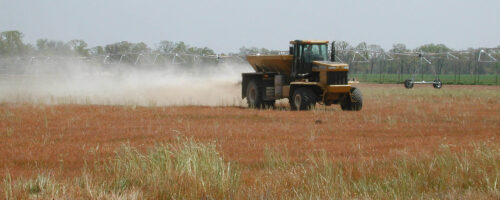In our business at the Noble, we have the opportunity to visit with many farmers and ranchers whom we refer to as cooperators. We work with some of the best people in the world, those that have been entrusted with land and livestock stewardship. We are thankful for this privilege.
Occasionally, we run across a situation that can provide a learning experience for several others. Following are a couple of scenarios that have actually happened more than once. If you are one of the several that over the years have heard this, I want to say thank you for bringing it to my attention. Hopefully, others will gain from your questions.
Scenario one took place on a cow-calf producer’s place that normally retained his spring-born calves through the winter and spring on small grain pasture. The calves, being 13-15 months old at sale time, usually weighed 800 or 900 plus pounds. The question was is he selling his spring growth of small grain pasture for the most money by running it through the big calves?
A second scenario happened with another cooperator that was a stocker operator. He normally purchased calves weighing 300-400 pounds and grew them to 600-800 pounds depending on prevailing market prices at sale time. His question was is he getting the same price per pound for the gain as what the cattle brought per pound?
The answer to both of these situations relates to what a that pound of incremental gain. The last pound gained is not worth the same as the market price per pound of the live animal. An example may help to explain this. If the market price for a 725 pound steer is $80 per hundred weight (cwt.) the total value of the steer is $580 (725 X 80¢ = $580). On the same market, the price for a 750 pound steer is $78 per cwt. which makes him worth a total of $585 (750 X 78¢ = $585).
To determine the value of the additional gain subtract the value of the 725 pound calf ($580) from the 750 pound calf ($585) and divide by the 25 pounds of incremental gain ($585 – $580 = $5, 25lbs = 20¢). The value of the additional 25 pounds of gain is $5 or 20¢ per pound and not 78¢ per pound.
If your cost of gain is less than 20¢ per pound, then you could make a profit in this situation, but if it were above 20¢, each pound of incremental gain would lose money. It is important to know what it cost you to put on additional pounds and what the market is paying for the additional pounds. This can be calculated at any weight with this same procedure.
If you would like to do this on a computer with an Excel template, we have one available. The template we have developed also figures what the price slide actually is for each incremental weight range. A printout is shown below for what the market reported for steers on October 6, 1997 at Oklahoma City. This table could also be helpful in determining what weight of calf is the best buy.


Comment